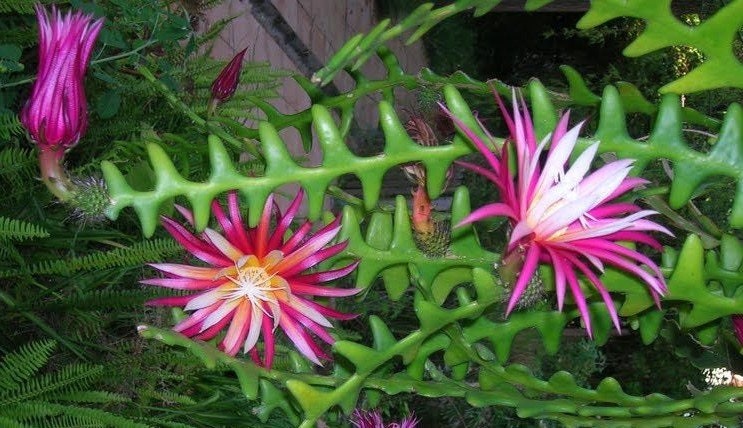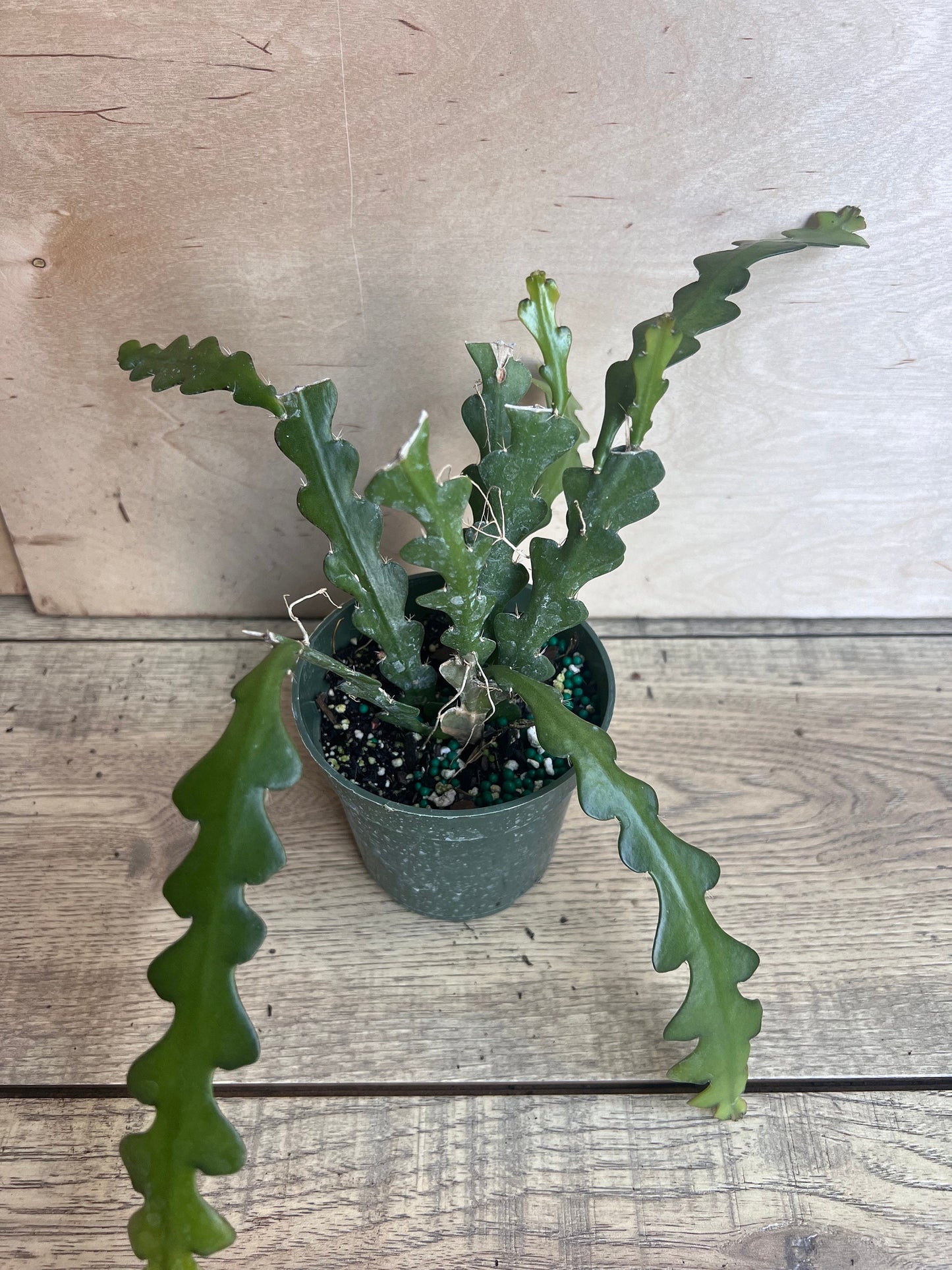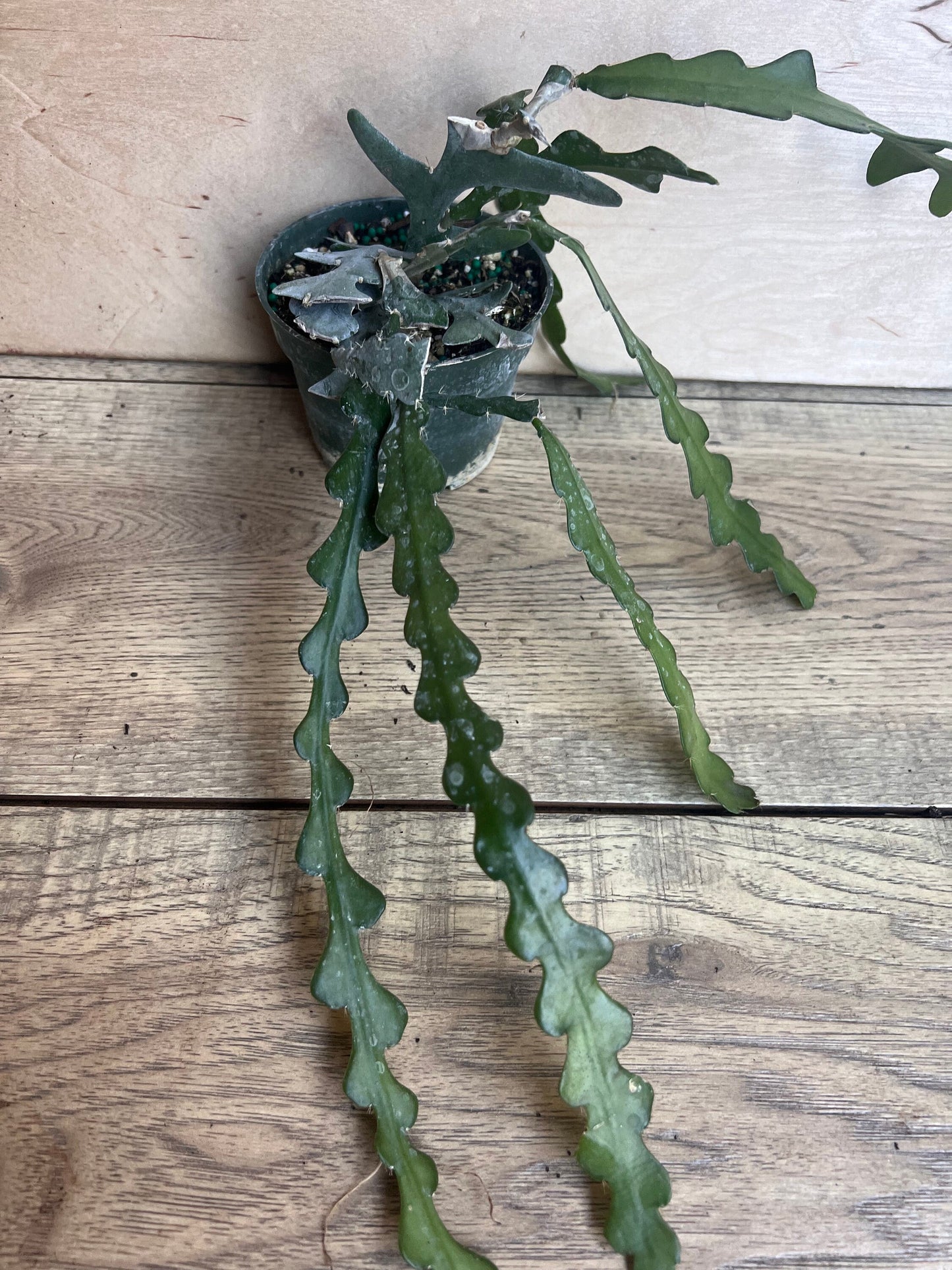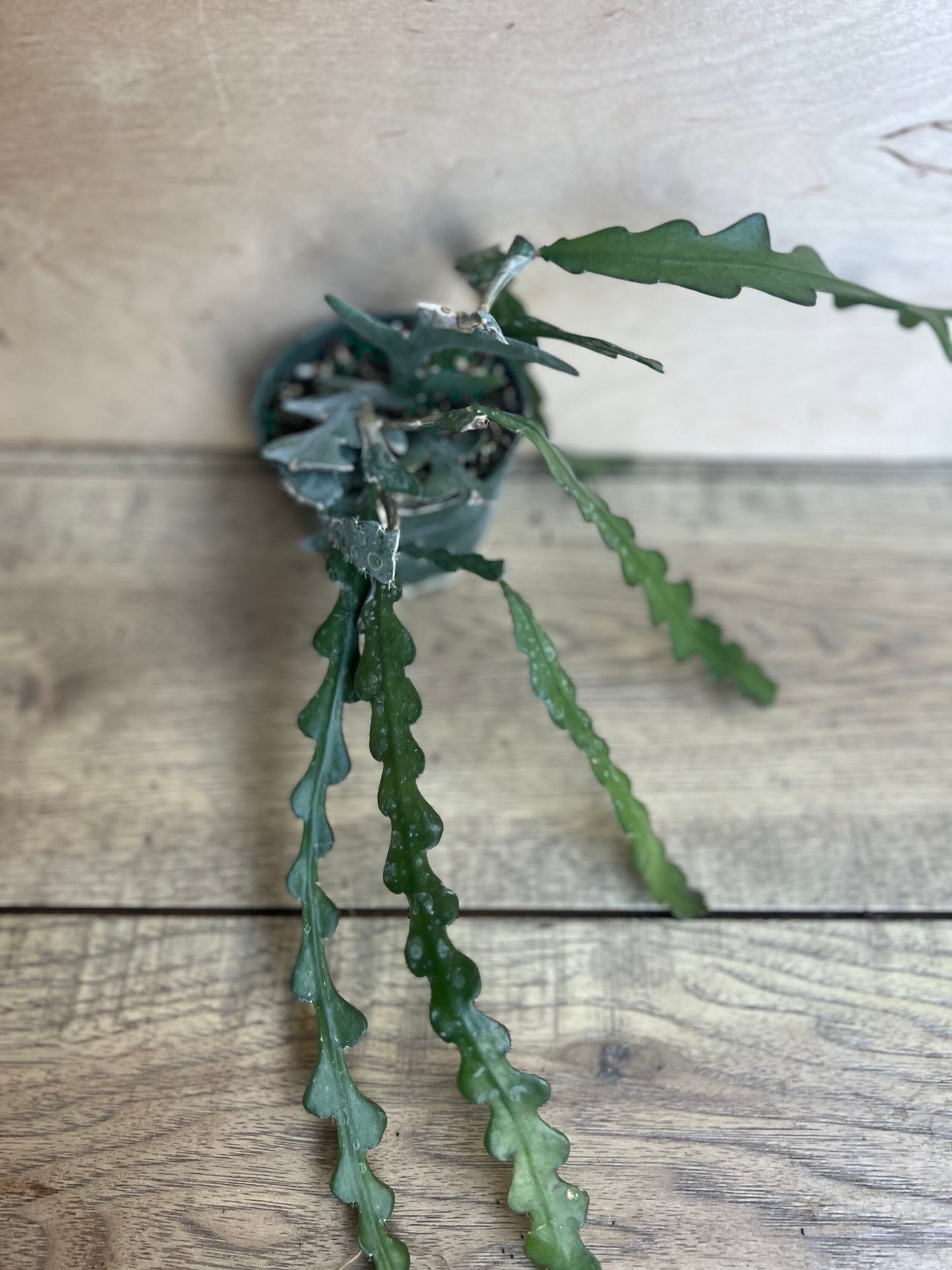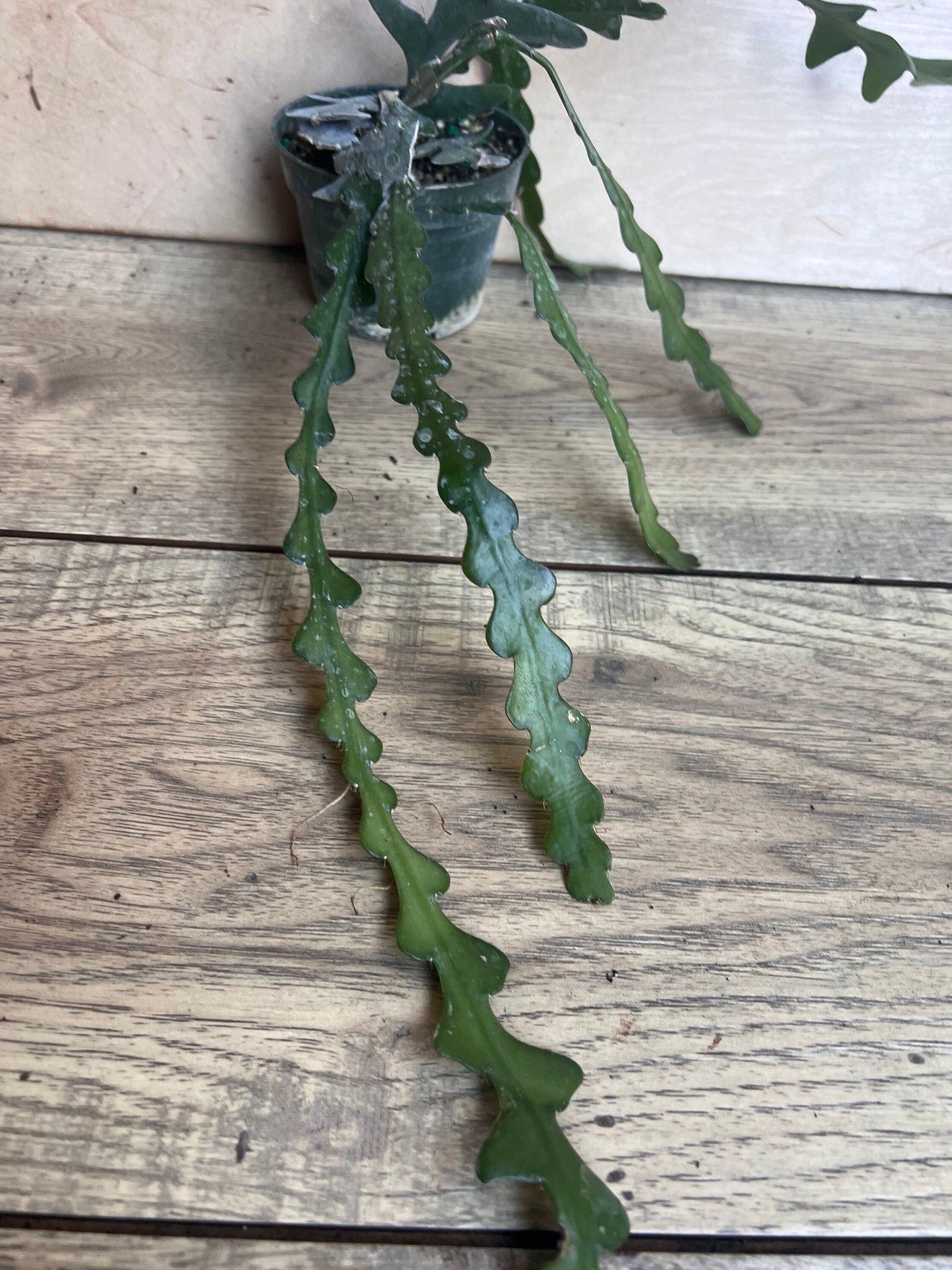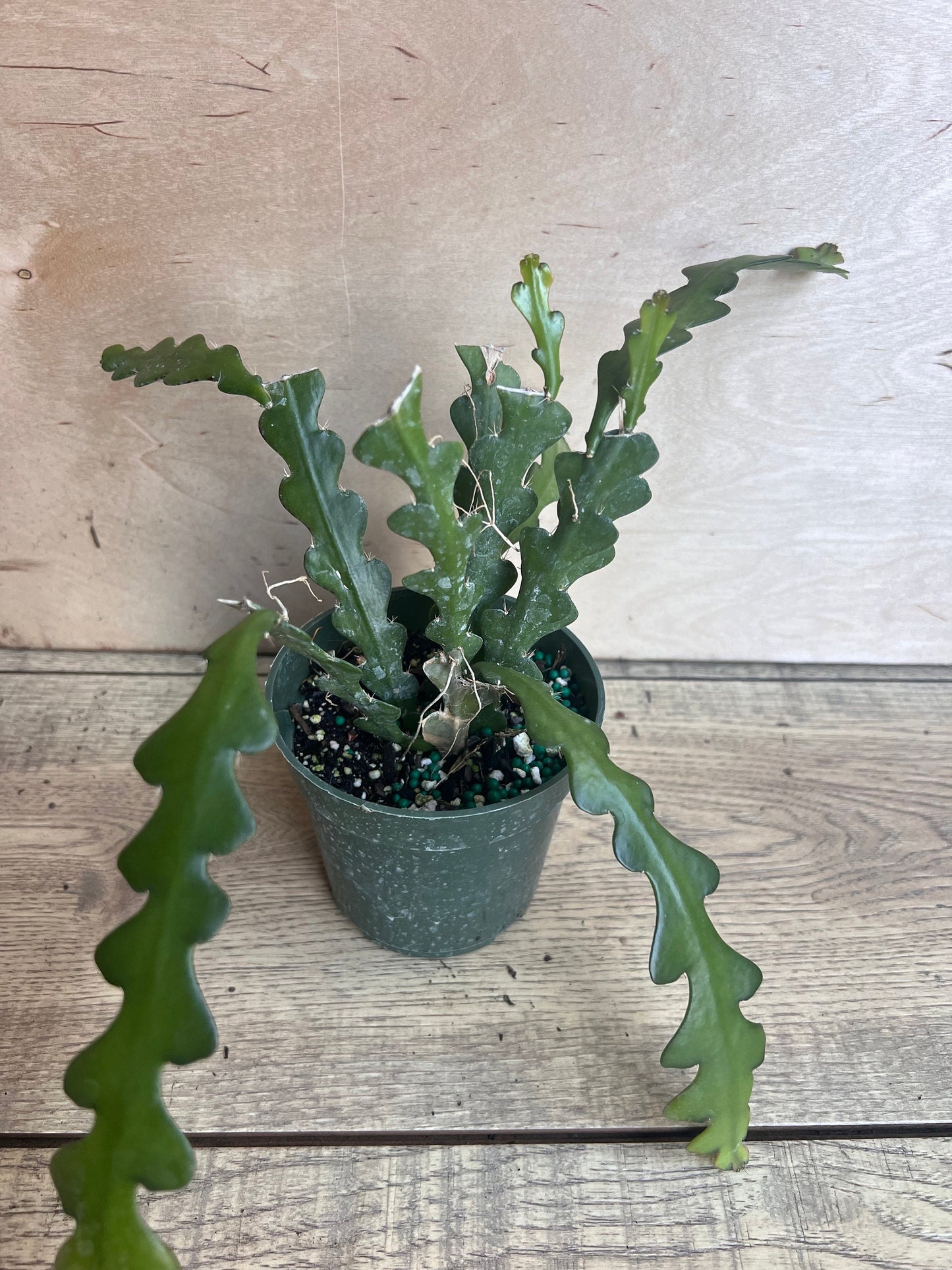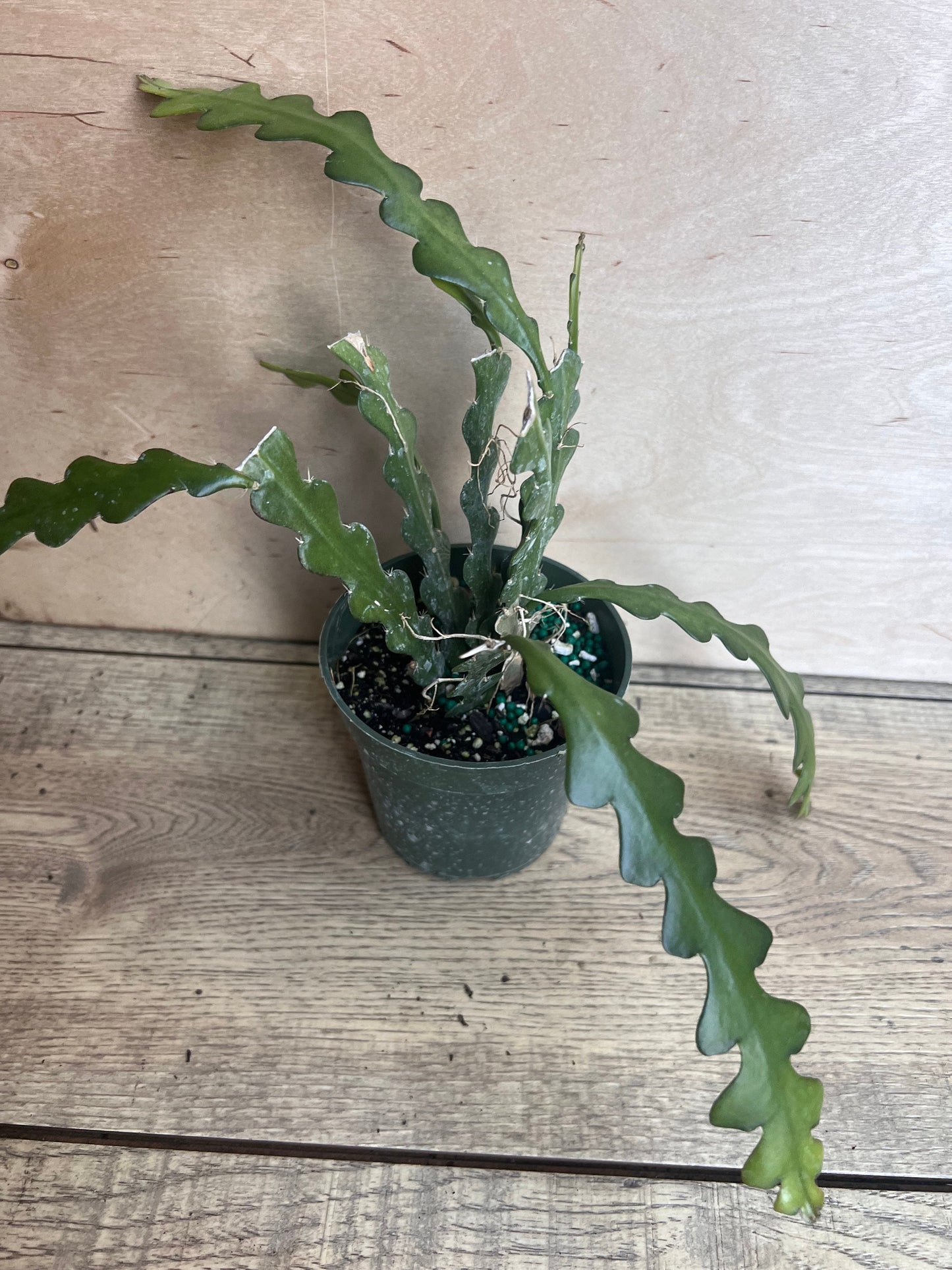Anguliger Ric Rac Cactus, Epiphyllum , Zig Zag Cactus -in 4" Pot
Anguliger Ric Rac Cactus, Epiphyllum , Zig Zag Cactus -in 4" Pot
Couldn't load pickup availability
Anguliger Ric Rac Cactus (Epiphyllum anguliger), or "Fishbone Cactus," is a unique, low-maintenance succulent native to Mexico. Its zigzag-shaped green stems resemble fishbones, growing in a trailing or climbing habit, making it perfect for hanging baskets or decorative displays. Known for its nocturnal, fragrant white or pink flowers, the Ric Rac Cactus thrives in bright, indirect light and well-draining soil. It’s drought-tolerant but benefits from occasional watering and fertilizer during its growing season. This eye-catching plant is a favorite among succulent enthusiasts for its unusual form and stunning blooms.
Light Requirements
- Ideal Light: Prefers bright, indirect light. Can tolerate direct morning sunlight but avoid harsh afternoon rays.
- Low Light Tolerance: Survives in lower light but may not bloom or grow as vigorously.
- Indoor Location: Best near a north or east-facing window; avoid prolonged exposure to direct sunlight.
Watering
- Schedule: Water when the top 1-2 inches of soil are dry (spring/summer). Soak thoroughly, allowing excess water to drain.
- Winter Care: Reduce watering during winter; water only when the soil is completely dry.
- Overwatering Signs: Yellowing, wilting, or soft stems; ensure proper drainage.
Temperature
- Ideal Range: Thrives in 65°F to 85°F (18°C to 29°C).
- Cold Sensitivity: Avoid exposure to temperatures below 50°F (10°C). Keep away from drafts and sudden temperature changes.
Soil
- Well-Draining Mix: Use cactus soil or a mix of perlite, sand, and potting soil. Ensure the pot has drainage holes.
- Repotting: Repot every 2-3 years or when root-bound, ideally in spring.
Humidity
- Preferred Levels: Moderate to high humidity (50%+).
-
Tips for Increasing Humidity:
- Mist occasionally.
- Use a humidity tray (water-filled dish with pebbles).
- Place a humidifier nearby.
Fertilizing
- Growing Season: Fertilize monthly with diluted balanced fertilizer (e.g., 10-10-10) during spring and summer.
- Winter Care: Reduce or stop fertilizing in winter.
Pruning and Maintenance
- Pruning: Trim stems to control size or encourage growth. Use clean scissors.
- Cleaning: Wipe stems with a damp cloth to remove dust.
Flowering
- Blooms: Produces large, fragrant white or pink flowers in late spring or early summer. Flowers open at night.
- Encouraging Blooms: Provide adequate light, warmth, and a resting period (cooler temperatures and reduced watering).
Pests and Problems
- Pests: Watch for mealybugs, aphids, or spider mites. Treat infestations with neem oil or insecticidal soap.
- Root Rot: Caused by overwatering. Ensure proper drainage and remove affected roots if necessary.
- Leggy Growth: Insufficient light may cause elongated stems. Relocate to a brighter spot and trim as needed.
Propagation
- Stem Cuttings: Take a mature stem (4-6 inches), allow the cut end to callus for a few days, and plant in well-draining soil.
- Water Propagation: Place cuttings in water until roots form, then transfer to soil.
Common Issues
- Yellowing Stems: Indicates overwatering or low light. Adjust care accordingly.
- No Flowers: Ensure adequate light and provide a dormant period to stimulate blooming.
- Drooping Stems: Address underwatering or low humidity by watering more frequently and increasing humidity.
Toxicity
The Ric Rac Cactus is non-toxic to pets and humans, making it a safe choice for households with animals or children.
With its unique appearance and striking flowers, the Ric Rac Cactus is an excellent addition to any indoor plant collection or tropical garden.
Share
